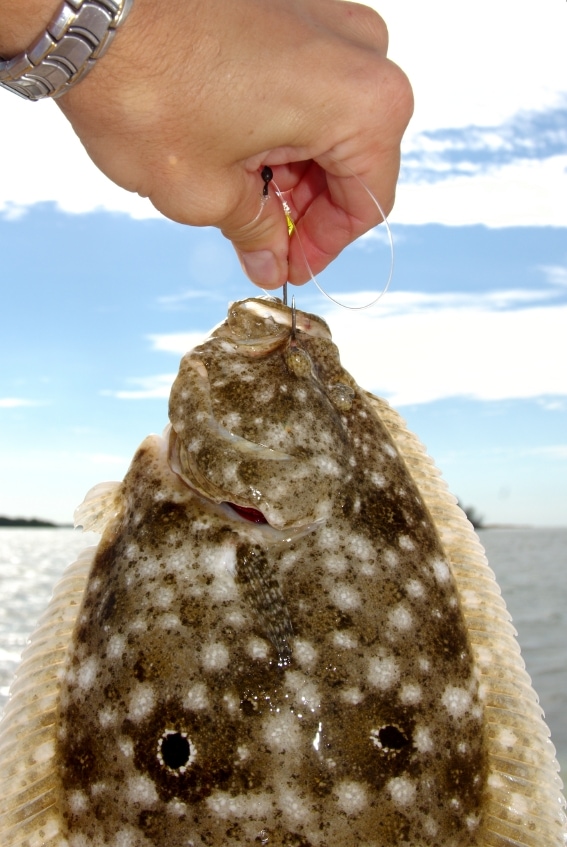 Flounder have been a top target aboard the Flat Back II this past week. These great-eating fish are around in pretty good numbers, and they are there for the catching…IF you know where to find them. Where they are now, are not necessarily where they were six months ago. They move inshore and offshore with the seasons and with changes in water temperature and available food.
Flounder have been a top target aboard the Flat Back II this past week. These great-eating fish are around in pretty good numbers, and they are there for the catching…IF you know where to find them. Where they are now, are not necessarily where they were six months ago. They move inshore and offshore with the seasons and with changes in water temperature and available food.
Wanna Catch a Flattie? Check the Weather First!
You would think that fishing for flounder would be a lot different than fishing for grouper, but when the weather is this warm, there are actually many similarities. Grouper are structure-oriented fish and find a wreck, reef, or habitat that suits them, staying for an extended period of time before either water temperature or lack of food becomes an issue, and they move on. But when it comes to fishing on the flats for species that move constantly with the tide to forage for food or to spend time setting up a temporary home, you‘ll need to look at water levels and how the habitat is affected by them. Flounder do move a good bit, but put that same fish in deep water, and this time of year with temperatures as warm as they are, and they much just hang on the structure just like grouper. The fluctuation of water temperature in the shallows can vary as much as 10-degrees during summer months, and these fish could just be looking for depth to find a more constant temperature environment to spend their summer days.
In cooler weather, flounder can be found in shallow sandy holes on the flats, on the edges of channels near passes, or around structure or on hard bottom, much like grouper. Flounder are ambush predators. In shallow water on the flats, these fish hold on the edges of sand, grass, or shell where moving water sweeps baitfish or crustaceans across the location so they can ambush their prey. But this is not where we are finding many of them right now.
A flounder’s ability to change color like a chameleon to match the surrounding habitat enables them to become a nearly invisible predator. Favored foods of flatties include killifish, live shrimp, and mud or bull minnows. I use several artificial lures to imitate these natural baits. DOA Shrimp or a CAL Jig with a Shad tail are my go-to baits, but I’ve caught them on Eppinger Rex Spoons, MirrOlure Lil’ Jons, and an assortment of sinking lures like the TT MirrOlure, when dragged along the bottom.
During the heat of summer, flounder can move off the flats to deeper areas of hard bottom in lower Tampa Bay in depths 6 to 21-feet, and this is where we have been targeting them on recent trips. Locating them is more like locating grouper. A good bottom machine with the ability to note hard bottom areas and sand or grass is key. Targeting these fish can be just as easy as finding the kind of bottom these fish prefer right now.
